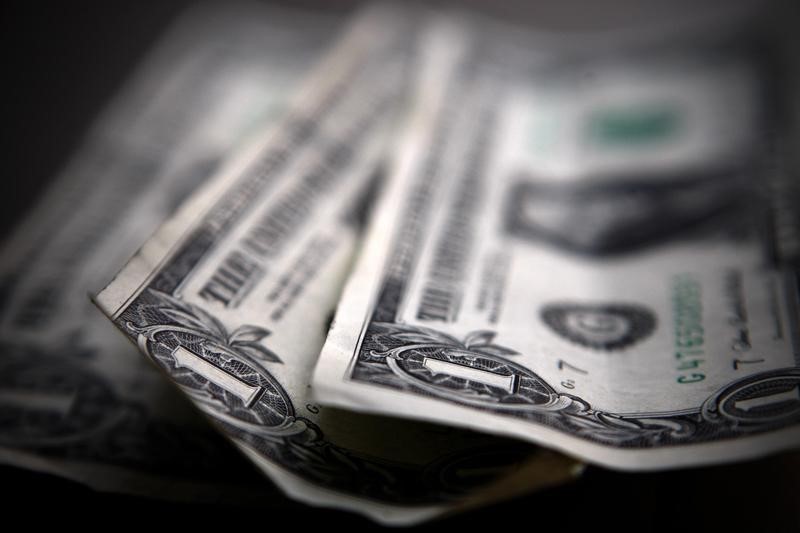By Peter Nurse
Investing.com - The dollar soared in early European trade Thursday, climbing to a nine-month high after the Federal Reserve raised the possibility of starting to cut back its pandemic-era monetary stimulus this year.
At 2:55 AM ET (0755 GMT), the Dollar Index, which tracks the greenback against a basket of six other currencies, traded 0.4% higher at 93.460, just below the 93.517 level reached earlier, its strongest since early November.
EUR/USD was 0.3% lower at 1.1675, falling to lows not seen since November 2020, GBP/USD fell 0.4% to 1.3708, falling to a four-week low, while AUD/USD fell 0.6% to 0.7188, a level not seen since Nov. 5.
The minutes of the July Federal Reserve policy meeting were released on Wednesday and showed the Fed officials saw the potential to ease bond-buying stimulus this year if the economy continues to improve as expected, although the condition of "substantial further progress" toward maximum employment had not yet been met.
This Fed meeting occurred before the strong July nonfarm payrolls report, and in all likelihood cements the view that the central bank will unveil more details of its tapering plan at the Jackson Hole symposium at the end of next week.
Ahead of that, the weekly initial jobless claims data are due later in the session, and should confirm a gradually improving U.S. labor market. The Philadelphia Fed manufacturing index for August is also scheduled for release Thursday, and is expected to show a small improvement from July.
Additionally, USD/JPY traded 0.3% higher to 110.06 and USD/CHF rose 0.2% to 0.9186, with the dollar also outperforming the Japanese yen and Swiss franc after the Fed minutes.
That said, these two currencies have performed strongly elsewhere this week, underscoring persistent demand for havens amid the political turmoil in Afghanistan. EUR/CHF is around 1% lower this week, while EUR/JPY is down 0.8%.
Elsewhere, USD/CNY traded 0.2% at 0.6959, just off a three-week high, ahead of the latest policy-setting meeting of China’s central bank, scheduled for early Friday.
The People’s Bank of China is expected to keep its benchmark lending rate unchanged for the 16th straight month, but that view is not universal amid signs the country's economic recovery is losing steam.
